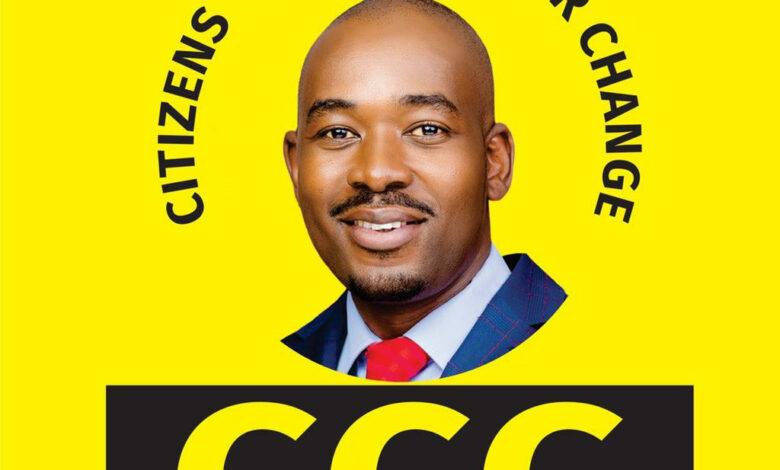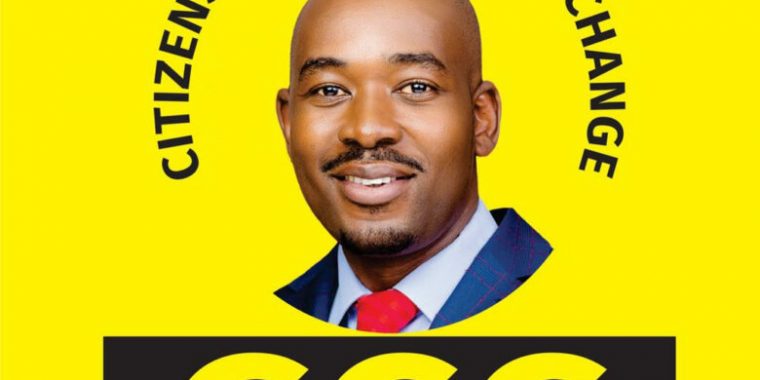
CCC
was
formed
on
the
eve
of
the
Nomination
Court
ahead
of
the
March
26
by-elections
to
settle
a
dispute
over
the
use
of
the
name,
MDC
Alliance,
which
the
rival
opposition
party
the
MDC-T
was
claiming.
The
fight
of
MDC
Alliance
was,
according
to
analysts
and
even
CCC
members,
part
of
state-sponsored
attacks
to
decimate
the
opposition
and
if
Chamisa
was
to
change
the
party
name,
it
would
have
made
it
difficult
for
voters
to
know
the
new
name.
“The
thinking
was
if
MDC
Alliance
changed
its
name,
rebranded
the
election
symbols
and
came
up
with
a
new
symbol,
it
would
be
difficult
or
unfamiliar
to
the
average
voter.
It
would
require
investment
to
market
but
the
Nomination
Court
produced
has
a
popular
symbol
for
the
new
party,”
said
Prof
Moyo
during
a
Twitter
Space
hosted
by
CITE
on
the
aftermath
of
the
Nomination
Court:
By-elections
or
Mini-General
Election.
Prof
Moyo
clarified
that
in
Zimbabwe,
political
parties
did
not
register
but
their
election
symbols
are
registered
and
subject
to
approval
by
the
Zimbabwe
Electoral
Commission (ZEC).
“There
are
a
host
of
election
symbols
that
are
prohibited
and
yet
in
fact
one
of
the
interesting
consequences
of
this
Nomination
Court
is
that
it
is
the
one
that
approves
election
symbols,”
he
said.
“A
genius
act
by
Chamisa
has
in
fact
been
the
use
of
his
portrait
as
part
of
election
symbol.
This
is
the
most
visible
famous
portrait,
especially
in
the
wake
of
his
showing
in
the
2018
election
where
he
broke
the
two
million
voter
barrier
and
some
of
us
who
looked
carefully
into
elections
are
aware
he
won
those
elections.”
Therefore,
Prof
Moyo,
said
the
newest
party
in
the
country
has
the
most
popular
symbol,
as
both
urban
and
rural
folk
knew
Chamisa.
“I
don’t
think
many
people
are
as
familiar
with
the
Zanu
PF
election
symbol
as
people
want
to
imagine.
It’s
been
there
during
the
whole
period
of
Zanu
PF’s
existence,
since
1980.
While
they
changed
from
a
jongwe
(cock)
to
the
Zimbabwe
Great
Monuments,
the
election
symbol
in
all
these
years
was
Mugabe’s
face.
That’s
the
symbol
people
knew,
they
did
not
look
for
these
Great
Zimbabwe
Monuments,
it
is
not
that
familiar.
Mnangagwa’s
face
is
worse,”
he
said.
The
political
scientist
squashed
sentiments
that
using
one’s
face
as
an
election
symbol
was
occultism,
saying
critics
were
trying
to
piggyback
on
this
concept
of
a
cult
to
criticise
CCC.
“It’s
interesting
to
observe
the
state
media
is
finding
it
difficult
to
criticise
CCC
they
tried
to
allege
it
had
betrayed
self
by
using
the
raised
index
finger
of
ISIS,
the
terrorist
group.
They
didn’t
even
know
that
was
used
in
Islam.
One
had
hoped
it
would
create
a
whole
narrative
about
CCC
as
a
terrorist
group
of
some
kind.
It
didn’t
even
last
for
an
hour,
then
the
next
complaint
was
the
election
symbol
is
cultist,”
he
said.
“Can
you
imagine
if
you
were
to
counter
suppose
Mnangagwa’s
face
against
Chamisa’s
face,”
adding
“there
were
not
many
political
leaders
who
were
courageous
enough
to
use
their
faces
to
carry
their
political
parties.”
These
symbols,
said
Prof
Moyo,
were
interesting
as
far
as
identifying
political
parties,
as
they
set
them
apart
besides
their
policies.
“Ideology
and
what
the
party
is
offering
the
electorate
are
traditionally
the
most
important
in
elections
but
not
in
this
election.
In
this
election,
one
most
important
question
revolves
around
the
consequences
of
the
Zanu
PF
instigated
recall
of
MDC
Alliance
MPs
and
councillors
and
everybody
has
understood
this
has
been
about
Mnangagwa
versus
Chamisa,”
he
claimed.
The
former
minister
argued
the
above
sentiment
was
clear
after
the
2018
election
with
the
way
the
Constitutional
Court
conducted
itself
after
Chamisa
challenged
the
presidential
result.
“In
fact
(Chief
Justice
Luke)
Malaba
disgraced
himself
with
the
way
he
handled
that
election
petition.
The
events
of
August
1,
2018,
and
January
2019
all
point
to
Mnangagwa’s
nervousness
to
his
illegitimacy
looming
large,”
Prof
Moyo
said.
“It’s
obvious
that
security
arms
sympathetic
to
Mnangagwa
wanted
to
turn
tables
and
contain
the
illegitimacy
issue
for
Mnangagwa
by
creating
an
illegitimacy
crisis
for
Chamisa
and
they
found
a
willing
Supreme
Court
to
do
that
in
the
form
of
a
judgement
it
produced
in
March
2020.
For
nearly
two
years,
the
impression
created
in
the
public
was
‘Mnangagwa
was
ok’
and
the
‘one
not
ok
is
Chamisa’
and
this
is
where
Mwonzora
became
a
more
potent
instrument.”

